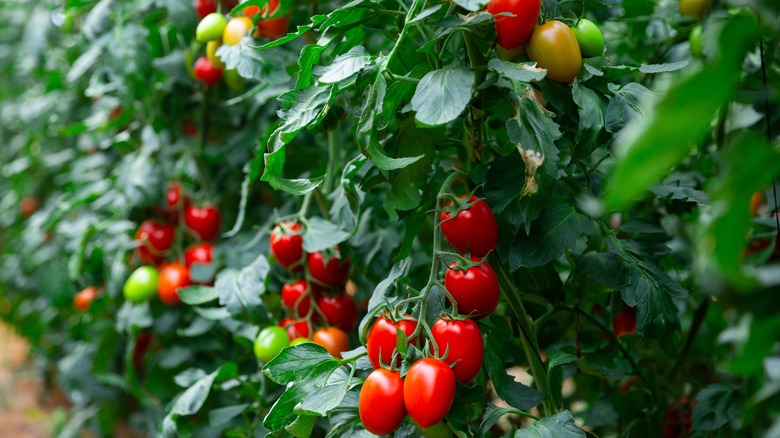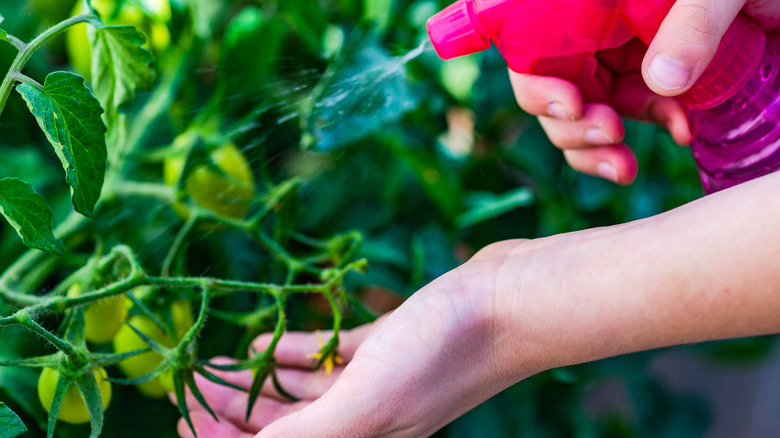Your Tomato Plants Will Thrive With The Help Of One Common Bathroom Essential
Tomato plants are a favorite in home gardens, but they're also notoriously picky. From premature leaf drop to curled leaves and low fruit yield, tomatoes are quick to show signs of stress, and one often-overlooked cause is a magnesium deficiency. That's where an unexpected household item can come to the rescue: Epsom salt. Also known as magnesium sulfate, Epsom salt is commonly found in bathrooms for soaking sore muscles. But what does Epsom salt do for your garden? Magnesium is a crucial nutrient for tomato plants, as it supports both photosynthesis and fruit development. Without enough of it, leaves may yellow between the veins, and your plant may look healthy but fail to produce much fruit.
Pairing Epsom salt with your tomato plants is beneficial if you've already ruled out calcium deficiency and suspect your soil may be missing key trace minerals. Magnesium deficiencies tend to appear later in the season, particularly in sandy, acidic soils. It's also useful for heavy-fruiting varieties that demand more magnesium over time. Adding Epsom salt to your tomato routine is a simple and cost-effective approach. A sprinkle at planting time and periodic sprays throughout the season can help keep your plants green and productive. You can also combine it with compost tea or seaweed extract for a balanced, organic feeding strategy. While this isn't a miracle fix for every tomato issue, it's a targeted and science-supported method to address a common nutrient gap. Here's how to use it properly so your plants can thrive throughout the entire season.
How to use epsom salt and what to avoid
To treat tomato plants with Epsom salt, add a tablespoon directly into the planting hole before setting transplants. This gives young roots immediate access to magnesium. For established plants, measure 1 tablespoon of Epsom salt per foot of plant height and apply to the soil every few weeks, or create a foliar spray by dissolving 2 tablespoons of Epsom salt per gallon of water. Mist the leaves thoroughly every two weeks during the peak growth period. Foliar spraying is especially helpful if your plants are already exhibiting signs of deficiency, such as interveinal yellowing or curling leaves. Since leaves can absorb nutrients directly, this method offers a faster response than waiting for soil amendments to take effect. While magnesium is beneficial, excess can disrupt your soil's nutrient balance, particularly in relation to calcium, another key player in tomato health. Excessive Epsom salt can also contribute to soil salinity over time, particularly in containers or raised beds with poor drainage.
Also, avoid applying Epsom salt blindly. Adding nutrients unnecessarily can sometimes stress plants. A simple DIY test to check the health of your soil or an extension service analysis can help you make the most informed decision about what your soil needs. Epsom salt is a helpful supplement, not a cure-all. But in the proper context, it can give your tomatoes the edge they need to produce better, longer, and more reliably. When used thoughtfully, Epsom salt can be a valuable tool in your tomato-growing arsenal, especially if you've noticed slow growth, pale leaves, or reduced fruit production.

